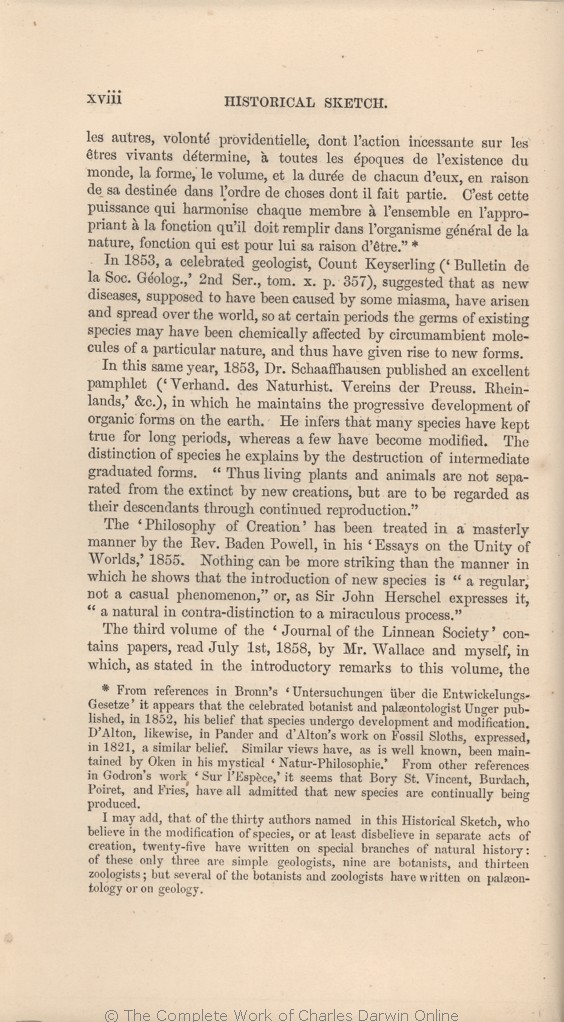les autres, volonté providentielle, dont l'action incessante sur les êtres vivants détermine, à toutes les époques de l'existence du monde, la forme, le volume, et la durée de chacun d'eux, en raison de sa destinée dans l'ordre de choses dont il fait partie. C'est cette puissance qui harmonise chaque membre à l'ensemble en
l'appropriant | l'appropriant 1861 1866 1872 | | l'appro- priant 1869 |
| remplir 1861 1869 1872 | | remplier 1866 |
| function 1861 | | fonction 1866 1869 1872 |
|
|
In
1853, | 1853, 1861 | | 1853 1866 1869 1872 |
| Géolog.,' 1861 1872 | | Géolog.' 1866 1869 |
|
|
In this same year, 1853, Dr. Schaaffhausen published an excellent pamphlet ('Verhand. des Naturhist. Vereins der Preuss. Rheinlands,' &c.), in which he maintains the progressive development of organic forms on the earth. He infers that many species have kept true for long periods, whereas a few have become modified. The distinction of species he explains by the destruction of intermediate graduated forms. "Thus living plants and animals are not separated from the extinct by new creations, but are to be regarded as their descendants through continued reproduction." ↑| 2 blocks not present in 1861; present in 1866 1869 1872 | | A well-known French botanist, M. Lecoq, writes in 1854 ('Etudes sur Géograph. Bot.,' tom. I.
p. 250), "On voit que nos recherches sur la fixité ou la variation de l'espèce,
nous conduisent directement auxidées
émises
par
deux hommes justement célèbres, Geoffroy Saint-Hilaire et Goethe."
Some other passages scattered through M. Lecoq's large work, make it a little doubtful how far he extends his views on the modification of species.
|
|
|
The 'Philosophy of Creation' has been treated in a masterly manner by the Rev. Baden Powell, in his 'Essays on the Unity of Worlds,' 1855. Nothing can be more striking than the manner in which he shows that the introduction of new species is "a regular,
not | not 1861 1866 1869 |
| — — — — — — — — — — — — — — — — not 1872 |
| contra-distinction 1861 | | contradistinction 1866 1869 1872 |
|
|
| The third volume of the 'Journal of the Linnean Society' contains papers, read July 1st, 1858, by Mr. Wallace and myself, in which, as stated in the introductory remarks to this volume, the
|









